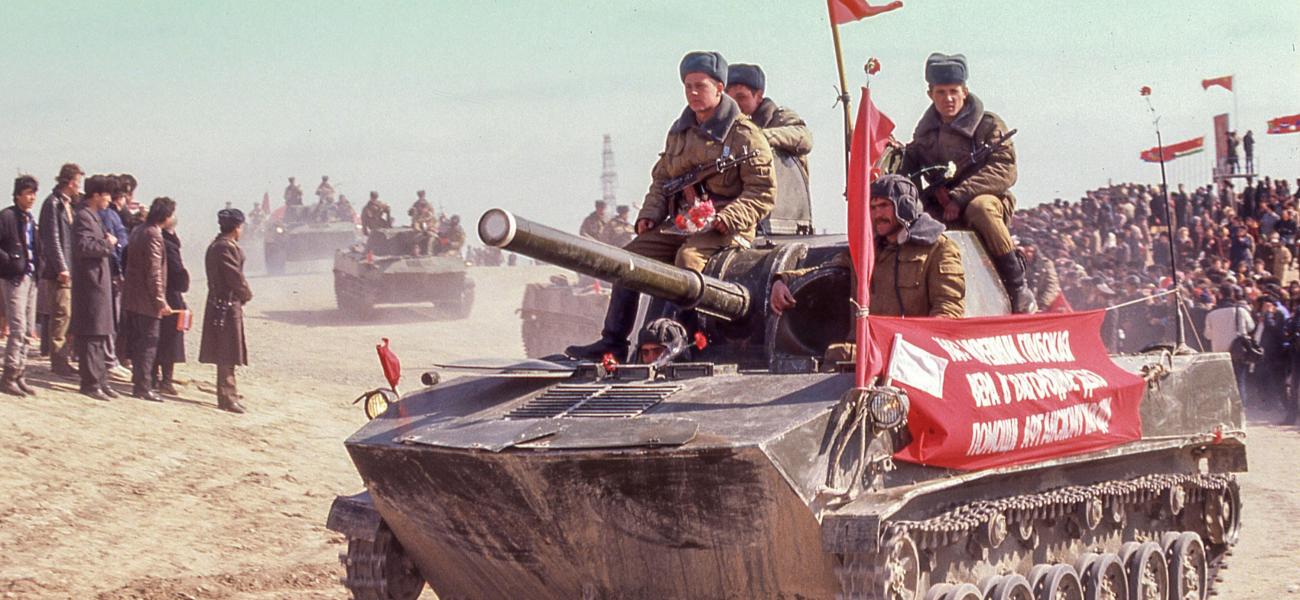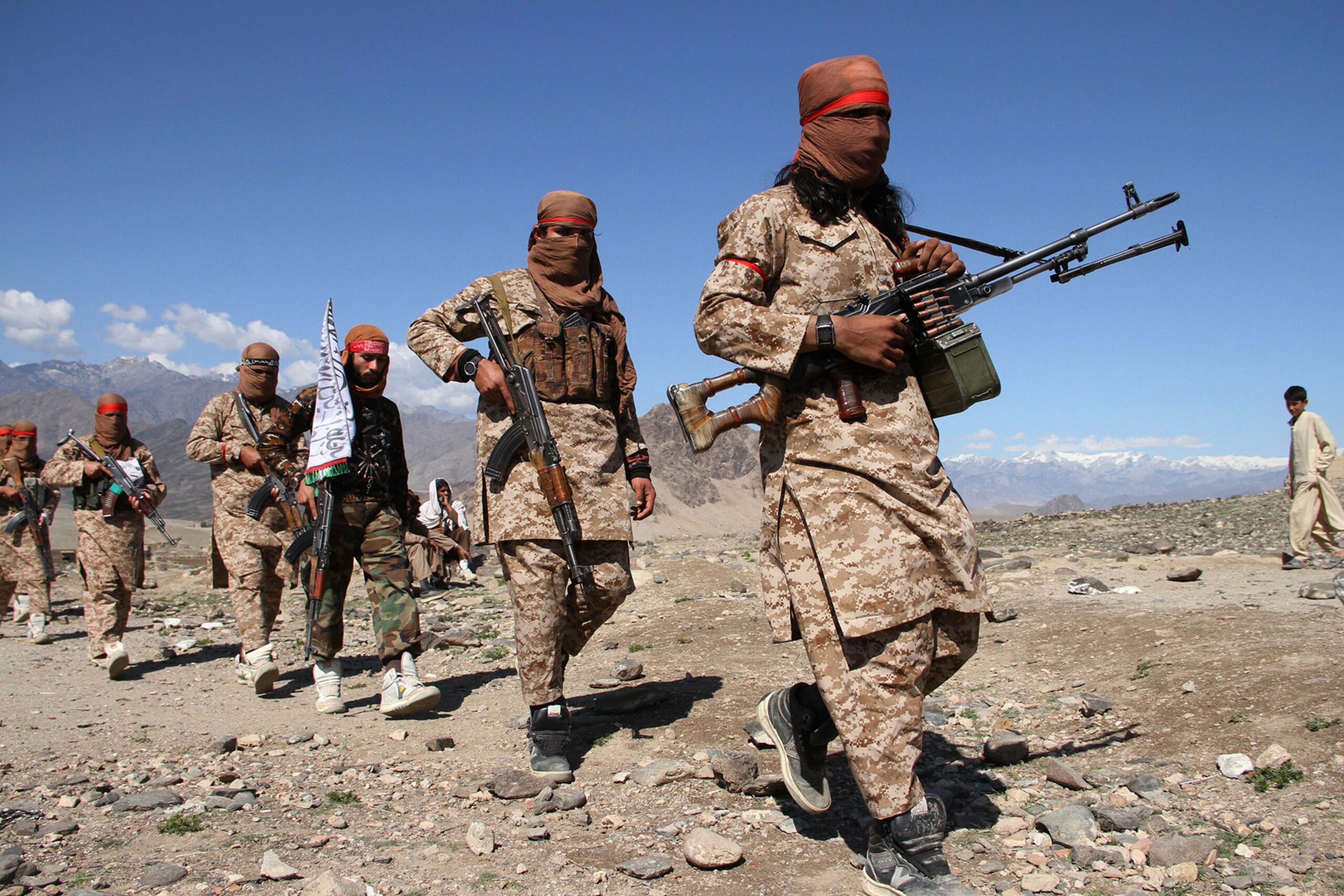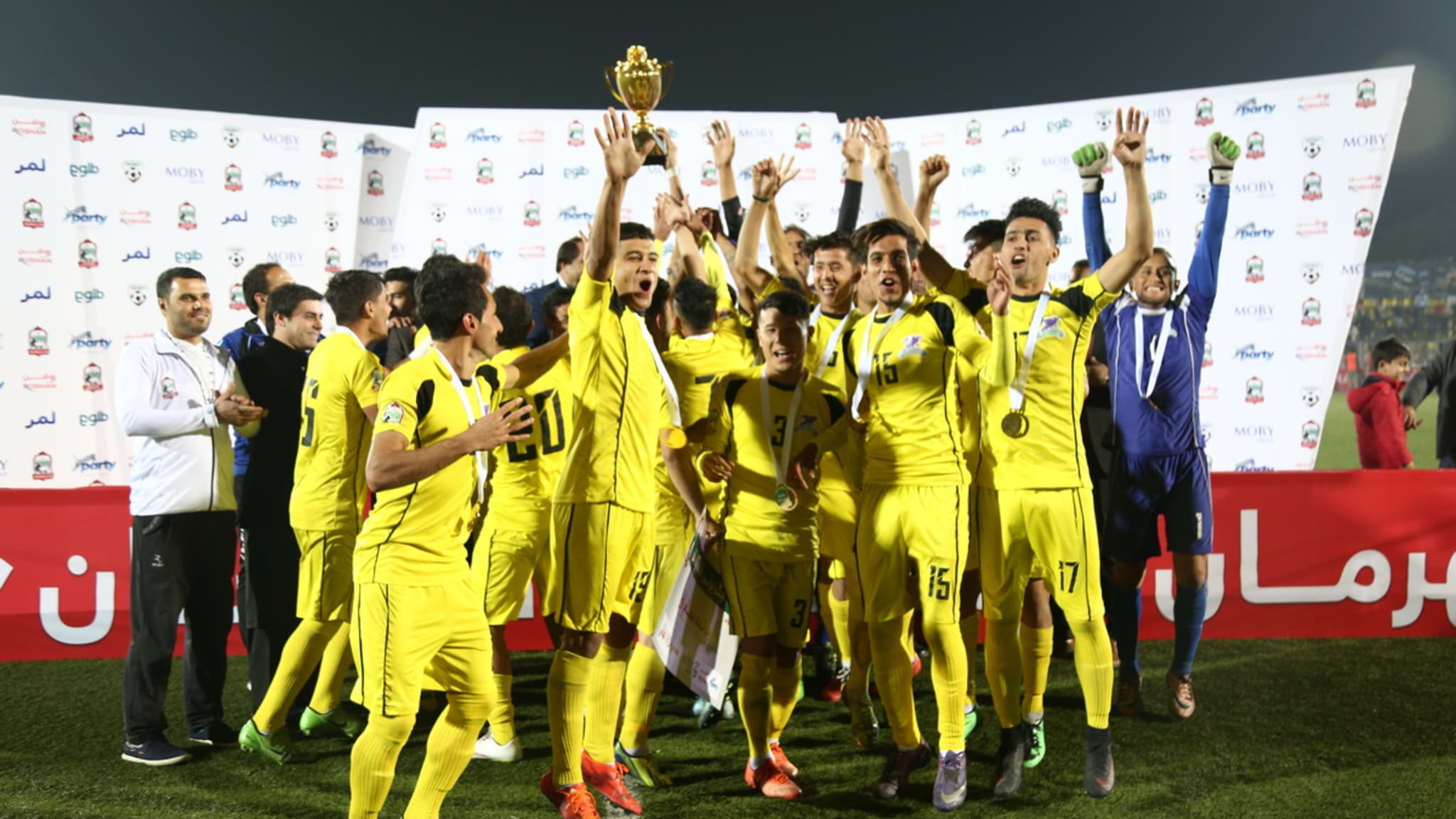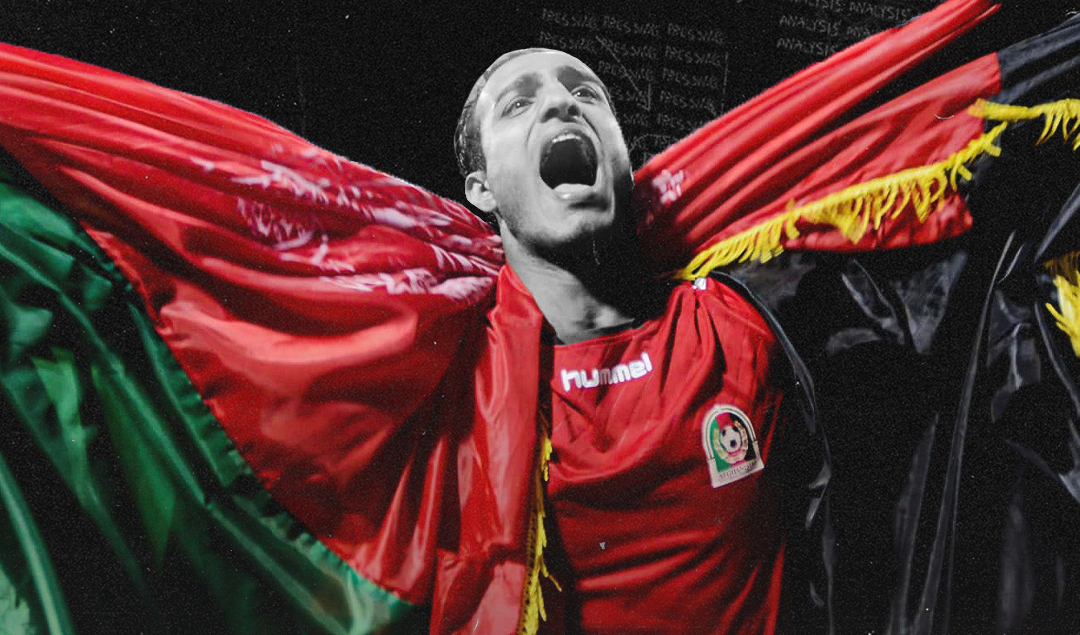The Reality Show That Triggered the Afghan Football League
ښې چارې! ته څنګه يې؟ (Khe chare! Ta tsanga ye?) This is how we greet in Pashto, one of the two official languages in Afghanistan (the other one is Dari, actually a version of Persian). I hope you are fine. Let’s go to Central Asia, in this theme of February, with football topics starting with the letter A.
Some countries have a parallel league, such as Mexico (Liga de Balomié Profesional) or India (Indian Super League) What happens where a league is created with the sake of bring some peace to a country which has been bleeding for many years and years of war? What happens when it is started thanks to a reality show? My dear friend, let me take you to Afghanistan.
Musical Recommendation
The territory of Afghanistan was once part of the Persian Empire, and it can be inferred that it should have absorbed the music; however, there are Turkic influences from Central Asia. The music you are going to listen to is a clear example. May I introduce you Sediq Shabab (صدیق شباب), also known as “The King of Qarsak” (پادشاه قرصک, pâdeshâh-e qarsak), genre developed during the Golden Age of Zoroastrianism.
In the qarsak (clap in Persian), we hear beats from the doira (دایره a drum with rings), musicians clap and recite verses (called usul, اصول) in a uniform rhythm. Songs are laconic and emotional. Sediq Shubab belongs to the Tajik ethnicity. Now listen to Gulha ra chida (گلهارا چیده, I have picked up the flowers).
Turbulent History
In an imperialism so engulfing as the one at the end of the 19th Century, colonial powerhouses naturally stomped over the sluggish countries, but as soon as they bumped into some nation matching their own size, there was hesitation right before unveiling the swords. The Russian Empire devoured Turkic territories, while the British Empire started to usher the richness from the Indian Subcontinent.
Sometime in the middle, there was a part of land between the Hindu Kush mountains; both empires wanted it. Besides, the Qing Dynasty in China and Persia were also in the equation. Nobody wanted a battle one between another, so the creation of a buffer state was agreed – Afghanistan.
Being a buffer country means having an abstruse life. Here, ethnicities, tribes and peoples live together and they do not have exactly the best relationships with each other. Somehow Afghanistan worked under a King called Amanullah Khan (امان الله خان). Afghanistan was constantly lured by either the United States or the Soviet Union so that this country joined whichever side during the Cold War, yet Amanullah Khan chose to remain neutral.
Amanullah Khan sat on the throne for 50 years until he decided to go to Rome. The people seized this opportunity to establish a republic… which lasted for few years, as another coup d’état (now with blood) prompted the creation of a Socialist protectorate under the tutelage of the USSR. The problem was that the rules did not take into account that axiom from Marx, Lenin and Stalin would not be welcomed so warmheartedly in a state where everything works out with tribes with clearly defined hierarchies.
Conflict broke out again: now the Soviets fought against the rebel Mujahideen (مجاهدين). This was the open door the United States was waiting for in order to redeem from the ignominy in Vietnam. They stated to fund a fundamentalist Islamic group called Taliban (طالبان). This way, the Soviets went out the back door and a streak of upsets started which eventually led into their implosion.

Photo: Arnold Drapkin/ZUMAPRESS.com
However, the Taliban regime grew even more up to the almost total domination of Afghanistan, ruling for five years at will with an iron fist, imposing their strict interpretation of the Koran. This ended abruptly in 2001 due to the excuse of the September 11th New York Twin Towers terrorist attack, which made the United States to invade the country and oust them from the power. Afghanistan is now an Islamic unitarian presidential republic, yet it is still in war against the Taliban, who are still in control of a huge part of the territory.
With more than 40 years of constant wars with little rest, it is no surprising for Afghanistan to have alarming levels of corruption, poverty, child malnourishment and terrorism. Sometimes it may seem that the hope for the Afghans is quite far, sometimes we think that the joy of the Afghan people cannot prevail due to the constant attacks.
Despite that, not everything is lost, more so when Afghanistan has traditional sports such as buzkashi (بزکشی), or more international sports, like cricket and football. How is football in Afghanistan?
Afghanistan’s Frantic Amnesia for Football
At the beginning of the 20th Century, Afghanistan bordered southwards with the British Indian colonies, so football is not a relatively new sport. The Afghan Football Federation in fact was founded in 1922. It joined FIFA in 1948, becoming one of the starters of the Asian Football Confederation (1954). The first club was Mahmoudiyeh FC (کلپ فوتبال محمودیه), established in 1934; followed by Ariana Kabul (کلپ آریانا), in 1941.
The former was the Afghan national team which made the debut against Iran – one win, two ties. The latter went on tour to the British India in 1937 and comprised a good part of the Afghan team which took part in the 1948 Summer Olympics in London, where was blown out 6-0 by Luxembourg. Football developed enough in the keen of the Afghan population throughout the decades of 1950, 1960 and 1970, just like around the world.
The sole difference was the absence of a well-established local championship, as well as a national team which endured the qualification process at least for the Asian Games. Afghanistan thus let vital important years in the world scale, firstly by omission, then as there was no option: the endless wars came, and with them the intransigence of the Taliban regime.
Speaking about the Taliban, I will give an example of intolerance to football in 2000. The hugest ethnicity in Afghanistan is the Pashto, but due to the split between Russians and the British, they ended up divided from their brother in Pakistan. It would be simplistic to say the Pakistan Pashto forget about them.
In Chaman (چمن), the second most-populated city in Baluchistan (بلوچِستان) and located at the border with Afghanistan, there is a sports team called Young Afghan Club. They had the idea of going to Afghanistan. What could go wrong? This was the third match. Half time. The Taliban gate-crashed to apprehend those players wearing shirts and shorts. Everybody ran away. Every man for himself!
The head coach and all but 12 footballers managed to escape. Those without luck were arrested and thrown to jail for one night by the Taliban. They were released… right after they were shaven, a punishment for low-level crooks. How come? Taliban ordered every man to leave the beard to grow and to wear a turban and the “non-sinful” clothing – the shalwar kameez (شلوار قمیض), loose pants and a long-sleeved shirt, compulsory even during the fierce heat. Do not make me start with the treatment of women.

Photo: Wali Sabawoon/NurPhoto/Getty Images
Then, the United States invaded Afghanistan to find Osama bin Laden (أسامة بن لادن) (by the way, he was born in Saudi Arabia with Yemenite background) and the Taliban were defenestrated so to speak. This was just the moment when the vital signs of sports were seen again. When football was reborn, it suddenly realised that there was an intruder sport brought by those Pakistan Pashto, cricket. Another datum from the Pashto: did you know that Malala Yousafzai (ملاله یوسفزۍ), the heroine for female education in Pakistan, belongs to this ethnicity?
There was a long way to go. The comeback was in 2002 Asian Games in Busan, and the initiation rite was in the most burning fire: 0-10 against Iran, 0-11 against Qatar, and 0-11 against Lebanon. The first win ever arrived in 2003, a 2-1 against Kyrgyzstan as part of the qualification for the 2004 Asian Cup in China. Then, participation in the Challenge Cup (competition for the low-tier Asian national teams), Asian Cup qualifiers and SAFF cups.
The poison of the defeats was gradually metabolised and the results came. For example, for Germany 2006, Afghanistan lost against Turkmenistan with an aggregated score of 13-0, while for South Africa this country achieved an away tie with Palestine… this being thanks to calling up Afghan players in foreign championship.
But nothing like the 2011 SAFF Cup. In their group, Afghanistan tied 1-1 against India, beat 3-1 Sri Lanka and trashed Bhutan 8-1, scoring the only hat-trick (Balal Arezou), the fastest goal (Ata Yarmali, عطا یارملی) in the tournament, and the hugest victory ever, qualifying to semi-finals for the first time. Afghanistan was just warming up: clinched their first win ever against Nepal. This fairy tale ended abruptly with a 4-0 defeat against India which did not stained that December 2011. South Asia now knew that the Lions of Khorasan (شیران خراسان, sherân-i Khorâsân) could really compete.
Afghanistan has yet again eliminated for the Challenge Cup, which is an upset regarding the final last year. The Afghan Football Federation decided to grab the bull by the horn and to form an actual national league. We do have a league, some people protest. Indeed, but it is located in Kabul (کابل) though, some people answer.
This is understandable, as Kabul is the city in the best shape of an Afghanistan in ways for the reconstruction. We need a championship which really takes into account all the country, even the feared zones still ruled by the Taliban. All players so far come from the big cities, especially from the capital. There might more talent throughout the county for sure.
This is why the federation decided to organise the Afghan Premier League. What about sponsors? Roshan Telecom (روشن), the most important telecommunications company, and MOBY Group (گروه موبی, Gorúh-e Mobi), the biggest producer for audio-visual content. MOBY has many channels, such as Tolo (طلوع), for Persian-speakers, and Lemar (لمر), for those speaking Pashto. Tolo came up with the idea of the decade: what about making a reality show to conform the teams of this newly brand league? Genius! This is how was born Maidan-e Sabz (میدان سبز), “green field” in Persian.
The casting to join Maidan-e Sabz was launched. Thousands of Afghan Young people inscribe with the goal of being part of the new football league. The premises are not only in Kabul, but also in the north (Mazar-i-Sharif, مزار شریف), south (Kandahar, کندهار), east (Jalalabad, جلالاباد) and west (Herat, هرات). Tests are several: physical, mental, ball skills.
For example, players must run through mud and water with weighs tied to the ankles while handling the ball with headshots. Former players and coaches from the national team were the judges. Such tests run out through eight episodes that are still available on YouTube.
Afghan Premier League: Unity through Football
At the end of any episode, the audience chooses by phone call 168 players which will be with any of the eight teams of the new league (18 footballers). The aim of Maidan-e Sabz is to bring football to Afghan houses, Foster business and strengthen national union through sports.
How will this be achieved? Any team of the new Afghan Premier League (لیگ برتر افغانستان, Lig-e bartar-e Afghanestân) represents one of the eight regions, the result of the division of Afghanistan by UN for the assistance program. Likewise, each team will be named so that Afghans are inspired by patriotism, animals, and emblematic places from history and geography.
The Afghan Premier League teams are as follows:
Shaheen Asmayee (شاهین آسمایی). City: Kabul Region: Kabul and the metropolitan zone. Shaheen means “falcons” in Persian, while Asmayee is the Pashto name for a hill near Kabul.
De Spin Ghar Bazan (د سپین غر بازان). City: Jalalabad. Region: Eastern region, with the provinces of Nangarhar (ننګرهار), Kapisa (کاپيسا), Kunar (کونړ), Laghman (لغمان) and Nuristan (نورستان). Bazan are Hawks living in Spin Ghar, the Pashto name of the Safed Koh (سفیدکوه) mountains, which reach Pakistan.
De Abasin Sape (د اباسین څپې). City: Khost. Region: South-eastern, with the provinces of Khost (خوست), Paktia (پکتيا), Paktika (پکتیکا) and Logar (لوګر). Sape is a Pashto name which means “waves”, while Abasin comes from the same languages and stands for the denomination of the Hindu, one of the longest rivers in Asia. This is because Kurram is a tributary of Hindu, a subtle way to say that Hindu does not only belong to Pakistan.
Oqaban Hindukush (عقابان هندوکش). City: Ghazni. Region: Central, with the provinces of Ghazni (غزني), Parwan (پروان), Bamyan (بامیان), Panjshir (پنجشیر), Daykundi (دایکندی) and Wardak (وردگ). Oqaban means “eagles”, while Hindukush is where the Asian sky begins – after Hindukush we have Pamir, Karakoram and Himalaya mountains.
De Maiwand Atalan (د میوند اتلان). City: Kandahar. Region: Southern, with the provinces of Kandahar, Helmand (هلمند), Urozgan (اروزګان), Nimruz (نیمروز) and Zabul (زابل). This is the only warlike team. We have to remember the Maiwand (میوند) battle, on July 27, 1880, as part of the Second Anglo-Afghan war, where the Afghans could defeat a British-Indian army. This battle is still remembered in Afghanistan, and thanks to that, those soldiers are heroes (or Atalan in Pashto).
Toofan Harirod (طوفان هریرود). City: Herat. Region: Western, with the provinces of Herat, Farah (فرا), Ghor (غور) y Badghis (بادغیس). Toofan means typhoon in Persian, while Harirod is the Hari, a river which goes straight to Turkmenistan and dies on the Karakum desert… bearing the Tejend oasis. So, this is like honouring this river with a heart-breaking end.
Simorgh Alborz (سیمرغ البرز). City: Mazar-i-Sharif. Region: North-Western, with the provinces of Balkh (بلخ), Samangan (سمنگان), Sar-e Pol (سرپل), Jowzjan (جوزجان) and Faryab (فاریاب). This name is related to Persian mythology: Simorgh is the name of a gorgeous bird mediating between sky and earth, which has lived so long that it has witnessed three destructions of the planet. Alborz is the name of a legendary mount around which the planets and stars turn around, according to the Zoroastrians.
Mawjhai Amo (موجهای آمو). City: Kunduz, Region: North-Eastern, with the provinces of Kunduz (قندوز), Badakhshan (بدخشان), Takhar (تخار) and Baghlan (بغلان). Mawj is “waves”, a good reference to Amu Darya river, which ends in the remainders of the Aral Sea.
Let us suppose that one of the best players of the episode comes from the Western region. The teams from South, South-East or Centre will want him at all costs to reinforce the staff. So, we have footballers from different ethnicities playing in a region where they were not born.
Due to the distressing situation of the country, a league with a normal fixture (round-robin with home-and-away matches) is simply not possible. All matches should be played on the artificial turf field of the Afghan Football Federation stadium in Kabul, for 5,000 fans. The eight teams are divided in two groups playing each other once, with semi-finals and a final match, resulting in a 16-match season for only two weeks a year, held between September and October. This is thus the shortest FIFA-league.

Photo: The Khaama Press News Agency
Moby Media Group is also in charge of broadcasting the matches by their channels. 2012 is the year when the Afghan Premier League was born and it is still played. The Kabul Premier League was expected to join, but this was not the case. Yet the power from the capital is beyond discussion. The most successful team is Shaheen Asmayee, appearing in eight final matches out of nine, claiming the title five times, including the win last year. Toofan Harirod is next, becoming champions thrice.
Oasis Among Unrest
First of all, the now Rahmani Foundation Afghan Premier League has been recognised by the Afghan High Peace Council, established by the government to negotiate with the Taliban regime. This championship has represented a golden chance to be included for one of the most discriminated ethnicities in Afghanistan, Hazara.
This is also therapeutic for players and fans willing to leave back the war terror. Matches are followed by thousands of people, flooding the streets of Kabul during the tournament. Children try to sneak to the stadium in order to watch the matches. And ratings are never low. This league is not looked down by AFC and FIFA, both regarding football as a solace in Afghanistan.
Cricket had a similar upbringing, being the most popular sport in Afghanistan: Shpageeza Cricket League (شپږیزه کريکټ لیګ) was created with a Twenty20 format. Unlike football, Afghanistan has been part of the worldwide elite several times, so promising cricketers from England and the Caribbean are appealed to Central Asia. The goal is the same – to achieve peace in the country through sports.
Immediate Results
Football brought the so desired peace and with short-term results: Afghanistan went to Nepal for the SAFF Cup. Not only did the Afghans overcome convincingly the group stage, they knocked the host country with a single goal and then had a revenge with India, beating them 2-0.
Nobody in Afghanistan slept the night of that September 11, 2013. Everyone was so proud of names like the captain Zohib Islam Amiri (ذهیب اسلام امیری), Mustafa Azadzoy (مصطفي ازادزوي), Sandjar Ahmadi (ساندچار اهمادى), Balal Arezou (بلال آرزو), Mohammad Marouf (محمد معروف). And everyone wanted to touch the MVP of the tournament, the goalkeeper Mansur Faqiryar (منصور فقیریار): he was just overperformed one in five matches, saving everything, including two penalty kicks against Nepal in the very injury time.
FIFA took note thereabout. January 2014. FIFA Ballon d’Or Award Ceremony in Zurich. Right before Cristiano Ronaldo broke the protocol shouting Siiiiiimmmm out of his second title, FIFA mentioned the Fair Play Award. The winner was Afghanistan “for the solidarity of football against all odds after the effects of war, unrest and conflict”. Imagine: from the 204th place of the FIFA World Ranking in January 2003 all the way up to 122nd place in April 2014.
Afghanistan can be certainly regarded already as a mediumweight team, after reaching the semi-finals in the last Challenge Cup, then ending the South Asian age as the runner-up of the SAFF Cup and finally being competitive in the Russia FIFA World Cup and the UAE Asian Cup qualifiers. They now have a level and status which attract Afghans born or refugees in countries like Russia, Australia, Germany and the United States. Those Afghans abroad receive the benefit from this atypical league which pacifies Afghanistan. And this is thanks to a reality show.
Conclusion
Football in Afghanistan was heavily hit by civil wars and the indolence of the Taliban regime: once a Pakistani team was punished because of not observing the dress code. After the American invasion which overthrew the Taliban, football came back to life. After a weak start in 2002, Afghanistan improved considerably until getting the SAFF Cup second place in 2011. In 2003, the Afghan Football Federation created the Afghan Premier League.
One of the sponsors, Moby Group, came up with the Maidan-e Sabz reality show in order to pick the footballers for the eight teams of this new league, which would represent each region of the country. This league has shown to be an excuse for the cohesion of the Afghan society: clubs made up of footballers from different ethnicities.
Endorsed by the High Peace Council, AFC and FIFA, the Afghan Premier League has been held every year. The results were immediate, winning the 2013 SAFF Cup, FIFA Fair Play award, and semi-finals of the Challenge Cup.
See you next time. !دخداى په امان (Da khoday pa amaan!)
By: Sebastián Alarcón
Featured Image: @GabFoligno / Prakash Mathema / AFP
